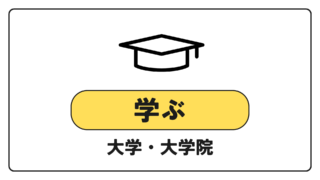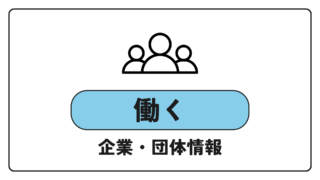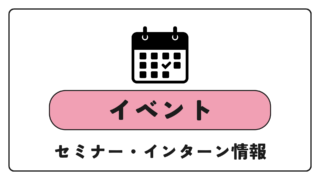Compass インドネシア高速鉄道入札で―中国戦略に負けた日本 荒木光弥
『International Development Journal』 2015 October edition
Railway building without national debt
In bidding competition to win the big business deal of the high-speed railway (or Shinkansen, bullet train) connecting the Indonesian capital Jakarta and Bandung (140km), Japan lost to the China’s strategic proposal. This was a significantly shocking event, when considering the history of Japanese aid to Indonesia.
Indonesia perhaps being aware of the significant impact this could give, Sofyan Djalil, the head of the Indonesian National Development Planning Agency, travelled to Tokyo as a presidential envoy. Sofyan visited the Prime Minister’s office to deliver the decision directly to the Japanese Chief Cabinet Secretary on 29 September. Such an extraordinary protocol by the Indonesian government tells how determined they are in this matter. That is to say, while appreciating the long-lasting cooperation of Japan, Indonesia is now determined to turn to a new way of public investment – private-sector loans-and-investments basis – which would not cause further accumulation of national debt.
Let us, firstly, compare the respective proposals of Japan and China. In terms of the estimated total costs, it is 5 billion US dollars in the Japanese plan, and 6 billion dollars in the Chinese one; the China’s is more expensive by 1 billion dollars. As for the completion year, the China’s plan is to complete by 2018, which is three years sooner than the Japanese proposal of 2021. The completion of the project by 2018 means that the railway construction would finish while President Joko Widodo is still in office, thus this brings him a political advantage in the next presidential election. Regarding the loan terms, Japan proposed a low-interest-rate yen loan, while China offered an investment-style funding which is to provide loans and investments to a joint enterprise between China and Indonesia. This scheme would not create Indonesian national debt, nor require a government guarantee.
As the Japan’s ODA loans absolutely require the Indonesian government’s guarantee, Japan had no chance of winning in this competition. The Japanese government has long held ODA-based yen loans as a main medium for high-quality infrastructure export strategy; however, if the competitor aims to offer a public investment without governmental debt, then the yen loans are no longer versatile. If the Chinese style of proposals spread, the international repercussion would not be insignificant. It is possible that the Chinese way of railway projects such as this one will become common among the developing countries.
China aims to realize a railway project also in a developed country, namely the United States, in a joint venture. China Railway Corporation expects to start constructing, jointly with the American passenger service National Railroad Passenger Corporation (Amtrak), a 370-kilometer long railway between Los Angeles and Las Vegas in September 2016. Japan’s Central Japan Railway Company (JR Central) once made an attempt in bidding with Shinkansen-style high-speed rail service in vain, as China proposed with low costs which were a half or one-third of what companies from the developed countries offered. It was no match.
It appears that such international moves of China are centered on the China Railway Corporation, which is under the direct control of President Xi Jinping. Behind them, some say, one can detect the shadow of the German railway equipment manufacturer Siemens of Germany , which actively supported the Chinese-led creation of the Asian Infrastructure Investment Bank.(AIIB)
Rise in power of the pro-China faction
It is possible that the Chinese-style railway construction proposal had already been agreed and a memorandum for cooperation with the Chinese National Development and Reform Commission in building the high-speed rail service had been signed, at the time of President Joko’s visit to Chaina and after Japan in March 2015. It is Ms Rini Soemarno, Indonesia’s Minister for State-owned Enterprises who is in charge of the matter, and she may have heard of the Chinese-style joint venture railway project in the US, when she visited China accompanying President Joko in March. It seems, therefore, the high-speed rail contract was already decided to be carried out in the Chinese way.
Some say that Rini is close to Megawathi Sukarnoputri, the leader of the Indonesian Democratic Party of Struggle, and pro-Chinese politician, and President Joko belongs to the same party. Normally, Megawathi as the party leader was supposed to run for the presidency, but the candidacy was reportedly switched to Jokowi for his popularity was jumping. Jokowi too is regarded as basically pro-China. Indonesian politics is fluid and the time to rely on the mainstream conservatives around Suharto-Yudhoyono is now passing. This was felt acutely in the railway shock of this time. The Japanese diplomatic networking is becoming obsolete.
Limit to yen loans
Now, let us sort out the problems. It is the limit of the yen loan in the infrastructure export. The Japanese government attaches great importance to yen loans, as if this is the only weapon in the exporting policy of the infrastructure. Provision of yen loans was used as a major diplomatic card, when the international liquidity was lacking. Those developing countries with certain level of advancement procure their own fund from the market, and private investment fund too can flow in.
Japan has 130 some countries as Aid recipients, out of which only some 10 countries wish yen loans. In particular, more advanced developing countries with which sizable investments are in high demand tend not to want yen loan cooperation as they used. For instance, a tied-aid scheme called STEP (Special Terms for Economic Partnership), ODA loans whose conditions are to utilize Japanese excellent technology, tends to be kept away even by Viet Nam, which is a pro-Japan country.
The Japanese government cannot provide yen loans without guarantee of the partner government. This is an international rule and the government cannot lend tax payers’ money without collateral.
In the Indonesian high-speed rail project, however, the Indonesian government went against the standard practice and designed public works without national debt, and it is achieving the objective via a joint venture with Beijing. Even if they did it on equal basis, Indonesian side cannot afford 50% of the cost. China seems likely to make a loan for this fund too, which suggests their offering an all-embracing joint venture deal. This is a typically Chinese, state-led way of doing a project.
Nevertheless, the Japanese government still regards yen loans as a powerful tool for the export of infrastructure, as if this is the golden rule. The ODA loan system has been in place for 60 years without renewing its design. In the new era, it is not as effective as before in responding to the competitive international bidding of large-scale infrastructure projects.
The ODA loans which are completely untied, by nature, only provide funding to the developing countries, therefore it can play only a limited role in national-interest-related projects of infrastructure export. Knowing this or not, lawmakers have unreasonably high expectations for yen loans.
If the government wants to make the Public-Private Partnership(PPP) as the pillar of international aid policy, it needs to create a new financial system which allows to bring out the power of the Japanese private sector. At the same time, why not entertaining a new policy that enables to win large projects without fail, using grant schemes.
By Mitsuya Araki, Editor-in-chief of IDJ
***** 以下、日本語原文 *****
羅針盤 インドネシア高速鉄道入札で―中国戦略に負けた日本
国家負債なしの鉄道建設
インドネシアの首都ジャカルタとスラバヤ(140キロ)を結ぶ「高速鉄道」(新幹線)の大型受注合戦で、日本は中国の戦略的な提案に負けた。日本の対インドネシア援助の歴史を考えると、その衝撃は極めて大きい。
インドネシア側もことの重大さを意識してか9月29日、大統領特使としてソフィアン国家開発企画庁長官が来日して首相官邸を訪ね、日本の不採用を官房長官に伝えた。異例とも言うべきこうしたインドネシア側の行為には、並々ならぬ決意を感じる。それは長年の日本の協力に感謝しながらも、これ以上の国家債務を積み上げない、新しい公共投資方式(民間投融資ベース)に転換する決意と見てよい。
まず日本と中国の提案内容を比べてみよう。総工費では日本50億ドル、中国60億ドルで中国が日本より10億ドル高い。完成の時期では、日本の2021年に比べて中国は2018年で、日本より3年ほど早い(これは、ジョコ大統領の在任中に完成することであって、その実績を次の大統領選挙でアピールできる、という政治的メリットになる)。融資条件では、日本の低金利円借款に対して、中国は融資方式を提案し、中国とインドネシアの合弁事業体へ投融資し、インドネシアの国家債務にしない。これだと政府保証を求める必要もない。
日本の円借款方式はインドネシア政府の保証付きが絶対条件であるから、初めから勝負にならない競争だった。日本政府は質の高いインフラ輸出戦略の手段として政府開発援助(ODA)ベースの円借款協力を掲げてきたが、相手が政府負債にならない公共投資を目指すようになれば、円借款方式は万能ではなくなる。中国の提案が広く波及すれば、国際的な影響は決して小さくはない。今回の中国方式の鉄道事業が多くの開発途上国に流布する可能性はある。
中国は先進国の米国でも合弁方式の鉄道事業を目指している。中国鉄路総公司は米国鉄道会社との合弁で、ロサンゼルス―ラスベガス(370キロ)の建設を2016年9月から着工する見通しだと言う。この路線は、かつてJR東海も新幹線方式でチャレンジしたことがあるが、中国は先進国企業の2分の1から3分の1の低コストで対抗しているので、まともには太刀打ちできない。
こうした中国の国際的展開は習近平国家主席直轄の中国鉄路総公司が中心のようである。その背後には中国提唱のアジアインフラ投資銀行(AIIB)に積極的だったドイツのシーメンスの影が見えるという説もある。
親中派の台頭
ジョコ大統領がまず3月に日本を訪問し、その足で中国を訪ねた時点で、中国方式の鉄道建設の提案が合意されて、中国の国家発展改革委員会との間で高速鉄道建設に協力する覚書が結ばれた可能性がある。その差配は同行したジョコ大統領の側近中の側近であるリニ国営企業大臣(女性)が取り仕切っているが、彼女はすでに訪中した時に、米国での中国の合弁方式による鉄道事業を耳にしていたかもしれない。だから高速鉄道建設は初めから中国方式で行くことが決められていたように感じる。
一説によると、リニ大臣は闘争民主党の党首メガワティに近く、親中派と目されているが、ジョコ大統領も闘争民主党に属している。本来ならば、党首メガワティが大統領選に出馬するところを、人気急上昇のジョコウィにスイッチしたと伝えられており、体質的には親中派とも見られている。インドネシアの 政治は流動的であり、スハルト―ユドヨノという保守本流の人脈だけを頼りにする時代ではなくなりつつあると言える。今回こそ時代の変化を痛感したことはない。日本の人脈形成は退化している。
円借款の限界
それでは最後に問題点を整理してみたい。それはインフラ輸出における円借款の限界である。政府はことあるごとに円借款をインフラ輸出政策の唯一の武器のように重視している。借款供与を胸張って外交の手段にしたころは、国際的な資金流動性を欠いていた時代であった。発展レベルの上がった開発途上国は、独自に市場からの資金調達をしており、民間投資による民間資金の流入も可能になっている。
日本には30数カ国に及ぶ主たる援助対象国がある。円借款を望む国は10数カ国以内である。なかでも大型案件のひしめく中進国的な開発途上国の場合は、かつてのように円借款協力を望まないケースが増えている。援助ヒモ付きのSTEP(日本の優れた技術活用型借款)などは、親日派のベトナムさえも敬遠する傾向にある。
日本政府としては、相手国の政府保証がない限り円借款は供与できない。それは国際的ルールであって、国民の財産を担保なしに貸すことはできない。
ところが、今回のインドネシア高速鉄道案件では、インドネシア政府がこれまでの常識をやぶるかのように国家の借金なしの公共事業を企画し、中国政府との合弁事業化でその目的を果たそうとしている。その場合、対等合弁方式をとってもインドネシア側に50%の資金もない。おそらく中国はその資金も融資するという、丸抱え方式の合弁事業を提示しているとみられている。これは、まさに国家主導の中国方式である。
ところが、そういう時代になっていても、日本政府は円借款を金科玉条のようにインフラ輸出の武器にしようとしている。新しい時代に立つと、戦後60年間も制度設計を改めることなく継承してきた円借款協力は、競争の激しい国際級の大型インフラ受注に対応する能力を失いつつあると言える。
完全な形でアンタイド化(ヒモ付きなし)を仕組まれている円借款は、体質的には好むと好まざるにかかわらず開発途上国への資金提供能力しかなく、国益的なインフラ輸出に役立つ能力には限界がある。それを知ってか知らぬか、特に政治家は円借款に異様なほど期待感を抱いている。
政府が「官民連携」を援助の柱にしたいならば、日本の民間力を引き出す新しい金融の制度設計を創出する必要がある。その一方で、無償援助の仕掛けで大型案件を必ず勝ち取る新しい政策を検討してみてはどうだろうか。
『国際開発ジャーナル』主幹 荒木 光弥









コメント